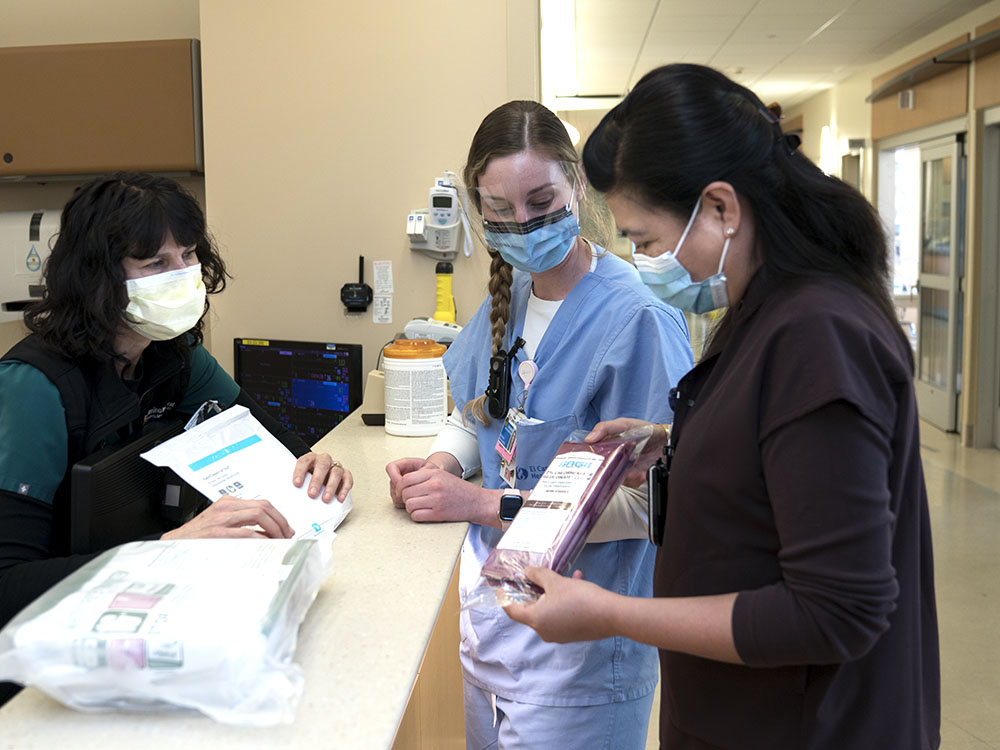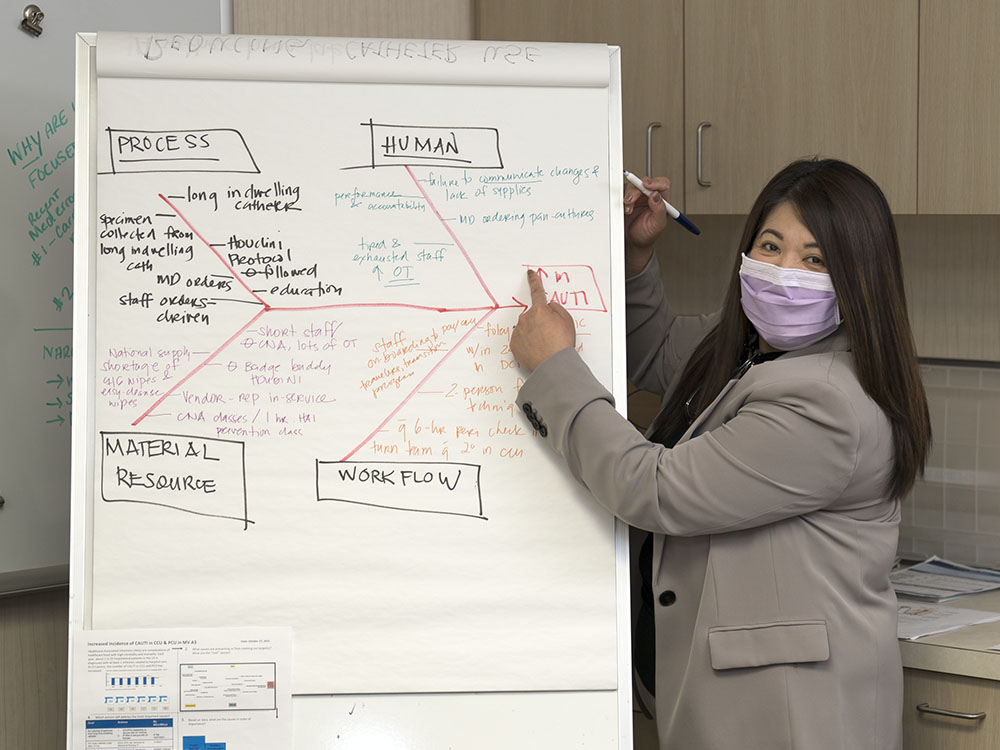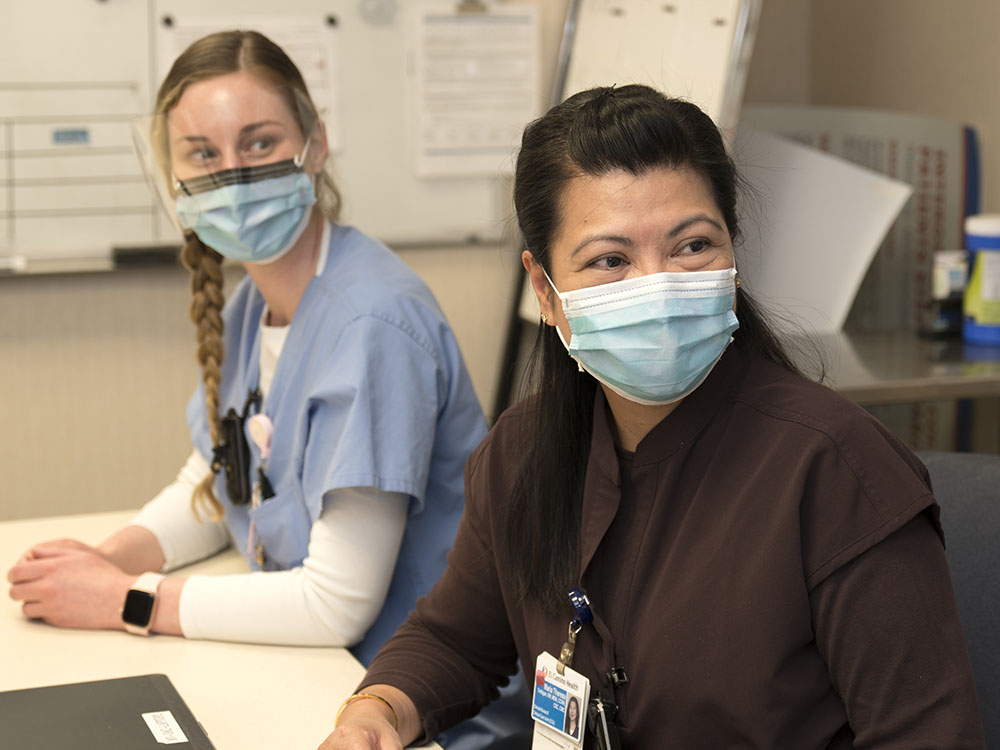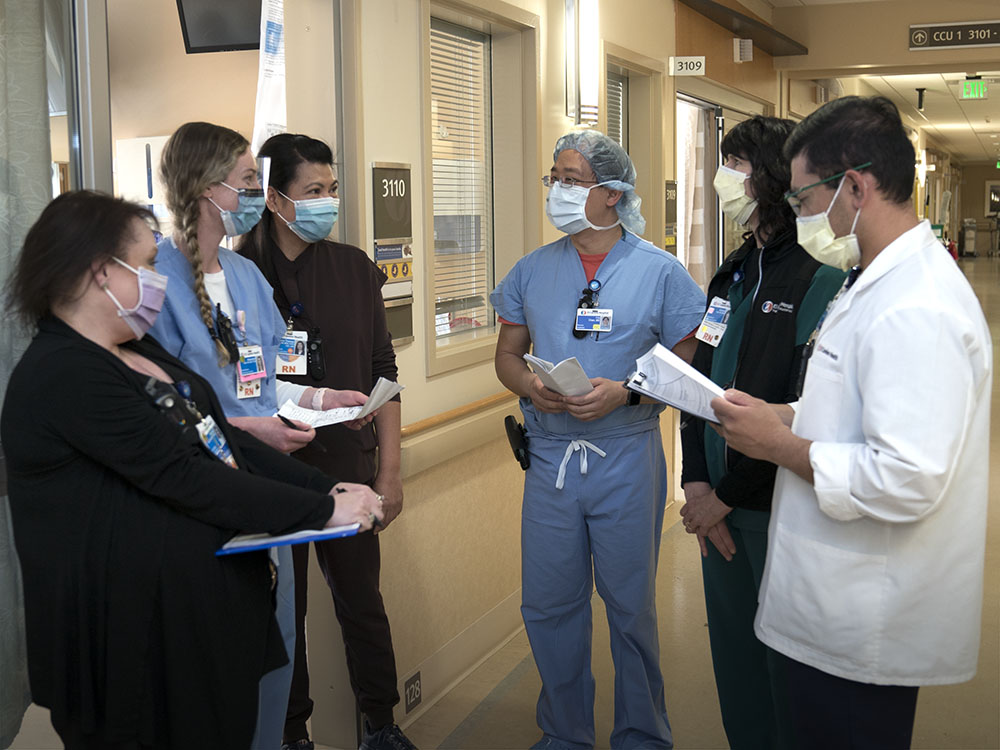
Alexandra Keihl, RN
Maria Tinitigan, RN
Reducing Urinary Catheter Infections
Catheter-associated urinary tract infections (CAUTI) are one of the most common hospital-associated infections. After our nursing teams identified increased CAUTI rates among adult patients in our Critical Care Unit (CCU), we developed a partnership to address the issue. We formed an A3 Team comprised of leadership and CCU nurses, the infection prevention team, the hospital acquired infection (HAI) committee, and CCU medical director.
The group, with the direction of CCU leadership and input from the unit partnership councils, updated procedures, and implemented best practices. This included:
- Implementing a two RN Foley insertion technique
- Reinforcing daily bathing and hygiene
- Chlorhexidine gluconate (CHG) baths
- Badge buddies developed as a resource for clinical nurses
- A poster reinforcing the process created and displayed on the nursing unit
CAUTI Reduction Rates
The CCU clinical manager and CCU medical director developed a tracking sheet and conducted patient rounds daily, to address line necessity. Both clinical nurses and unit leadership perform monthly audits on the CHG baths. Together, these strategies have led to a notable reduction in CAUTI rates — as of January 2022, the CCU has gone 278 days without a CAUTI.


Maria Tinitigan, RN

Alexandra Keihl, RN
Maria Tinitigan, RN
Gary Lin, MD
Andrea Ellis, RN
David Gabriel, RN
the CCU Unit had gone

